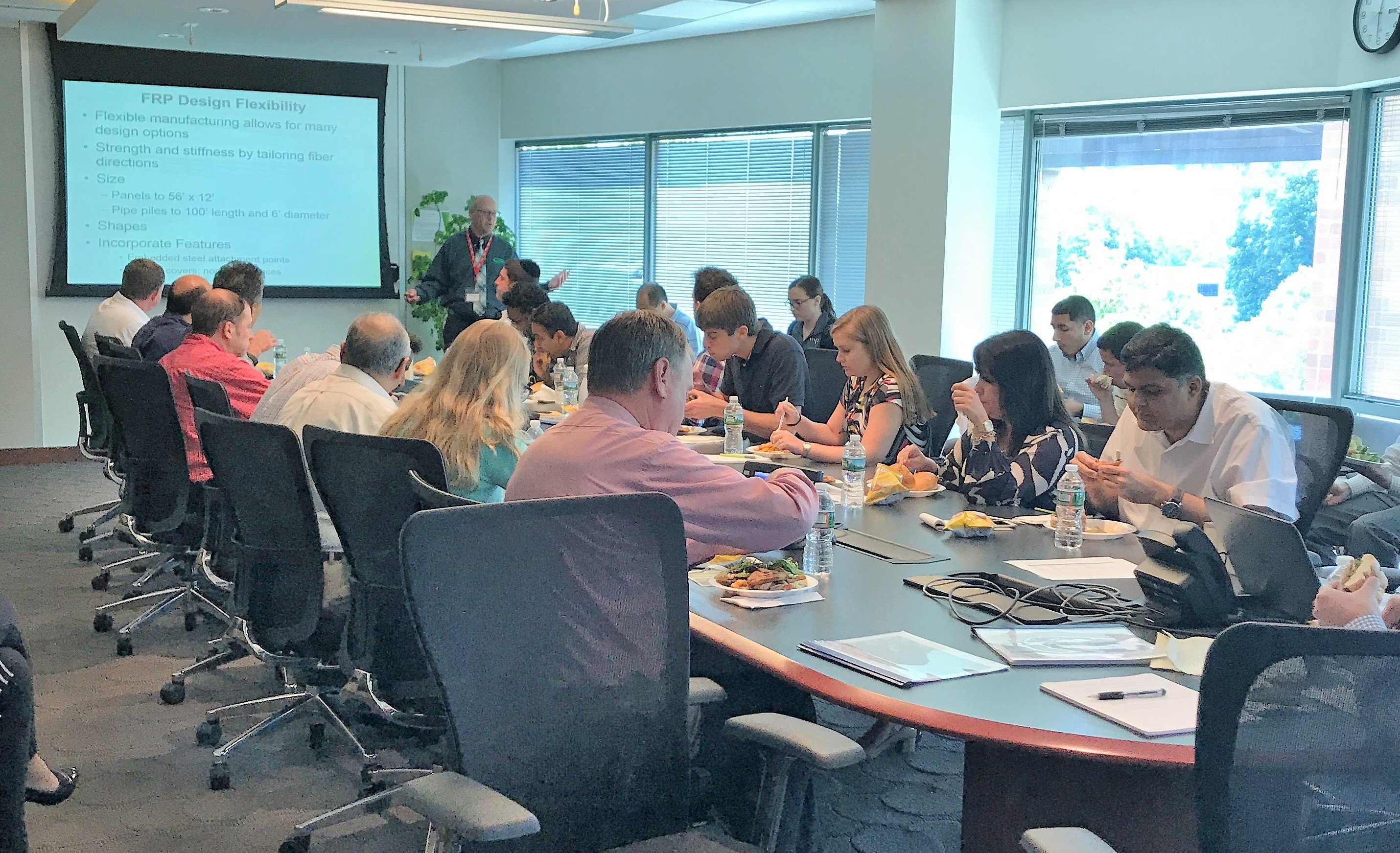 A fresh round of Lunch & Learn programs kicked off this month. These meetings and presentations help spread the word about FRP technology for bridges, route platforms and waterfront applications. The questions that owners and engineers ask at these events are one of the most important takeaways for us. These interactions tell us what they are concerned about and what topics we need to address to boost their comfort and confidence in FRP. It’s one of the most important things we can do to move new composite technology quickly toward full market acceptance. Some of these questions are the same ones that engineers ask whether the bridge is FRP, concrete or steel. The questions primarily focus on overlays and joints.
A fresh round of Lunch & Learn programs kicked off this month. These meetings and presentations help spread the word about FRP technology for bridges, route platforms and waterfront applications. The questions that owners and engineers ask at these events are one of the most important takeaways for us. These interactions tell us what they are concerned about and what topics we need to address to boost their comfort and confidence in FRP. It’s one of the most important things we can do to move new composite technology quickly toward full market acceptance. Some of these questions are the same ones that engineers ask whether the bridge is FRP, concrete or steel. The questions primarily focus on overlays and joints.
That’s because overlays and joints are the maintenance items that owners face. FRP deck suppliers have adopted the commercial products used with precast concrete bridges, parking garages and buildings. For the non-slip overlay, there are multiple options available depending on traffic type and count. Overlays can handle decades of traffic and vehicle snow plows if needed. We have discussed this in past blogs and plan to talk about this topic further in the coming months.
Questions focused on joints should be re-phrased as “how do I keep water and chemicals from degrading the steel superstructure?” Attendees want to know what joint materials we use, how well they work, how long they last, are they ADA compliant, and what the guidelines are for correct installation. There are some aspects of joint design and installation that are specific to FRP expansion and contraction. We address this in the design, calculations and installation manuals that are coordinated with the general contractor.
Feedback tells us we’ve done a good job in helping FRP technology achieve market acceptance in terms of its’ performance for structural decks. We get very few questions about the deck structure. The basic deck has evolved into a consistent product with standard design approaches due to lessons learned from Innovative Bridge Research and Construction (IBRC) projects. The FRP structural deck carries design loads with high-strength safety factors.
If your organization is considering FRP decking for bridges or rail platforms, contact me about a Lunch & Learn presentation or one of our periodic webinars
If you'd like to learn more about the benefits of FRP stacks up to concrete we've got a great Ebook that tells you all about it. Get it HERE>>>
